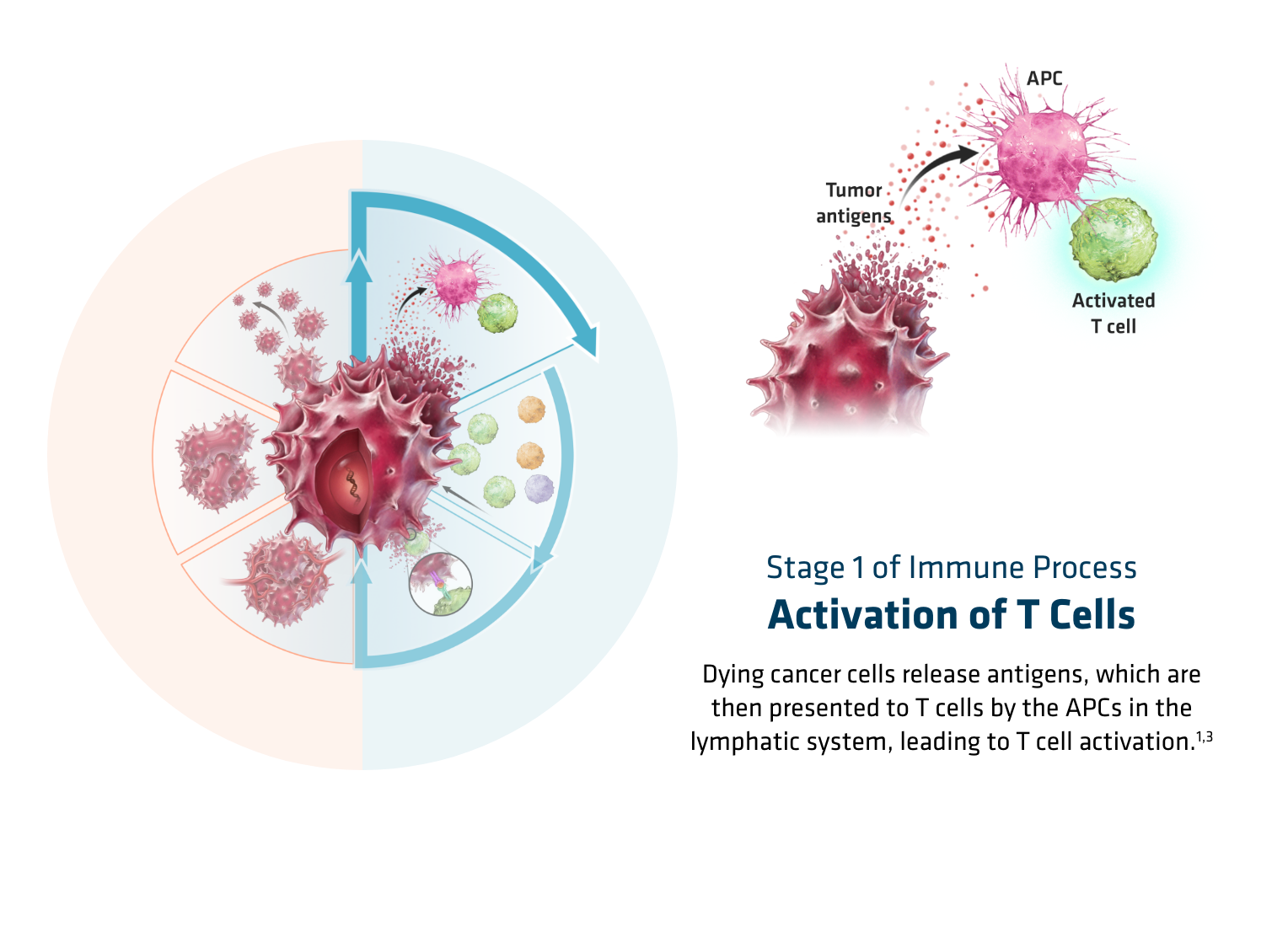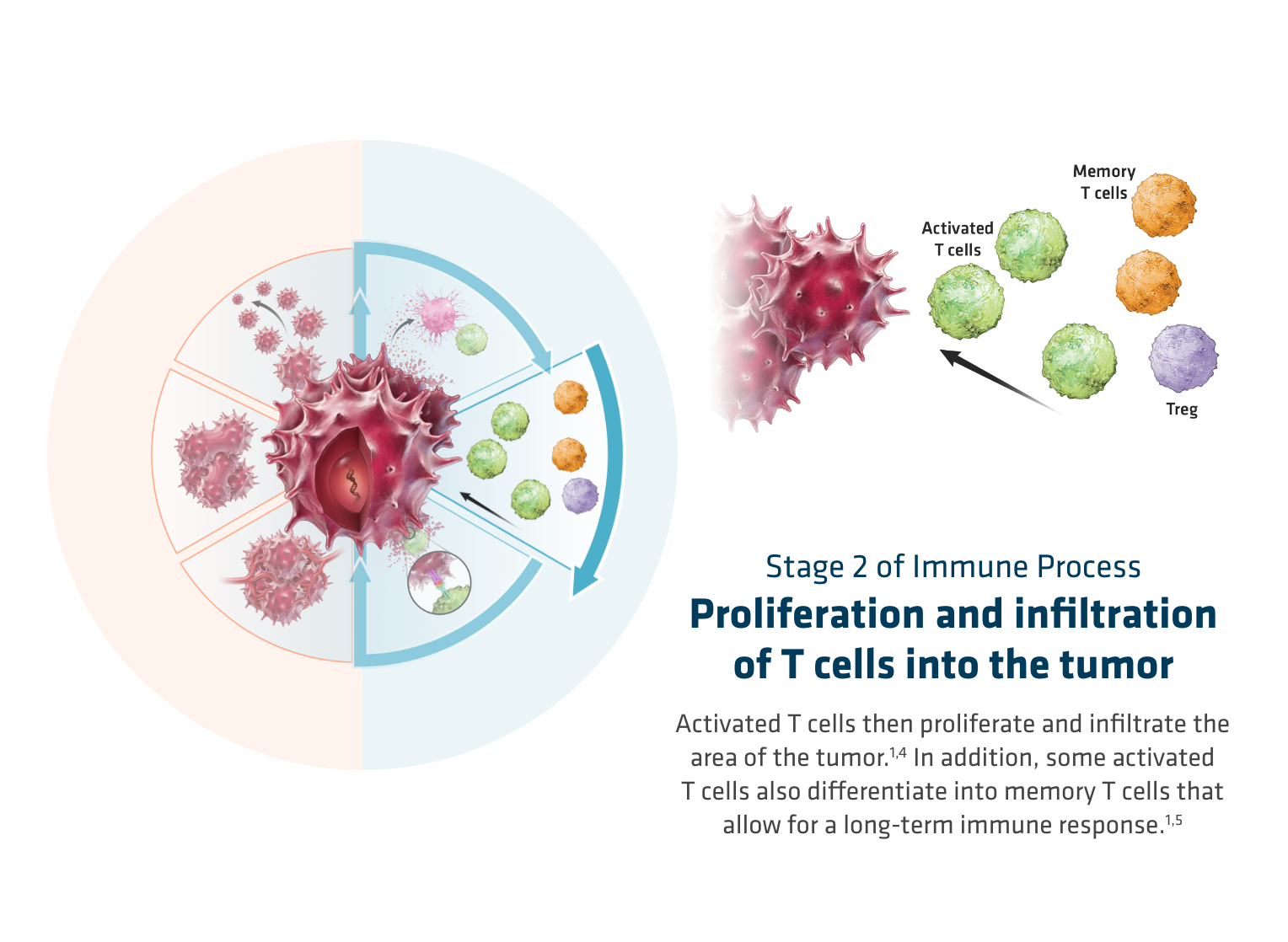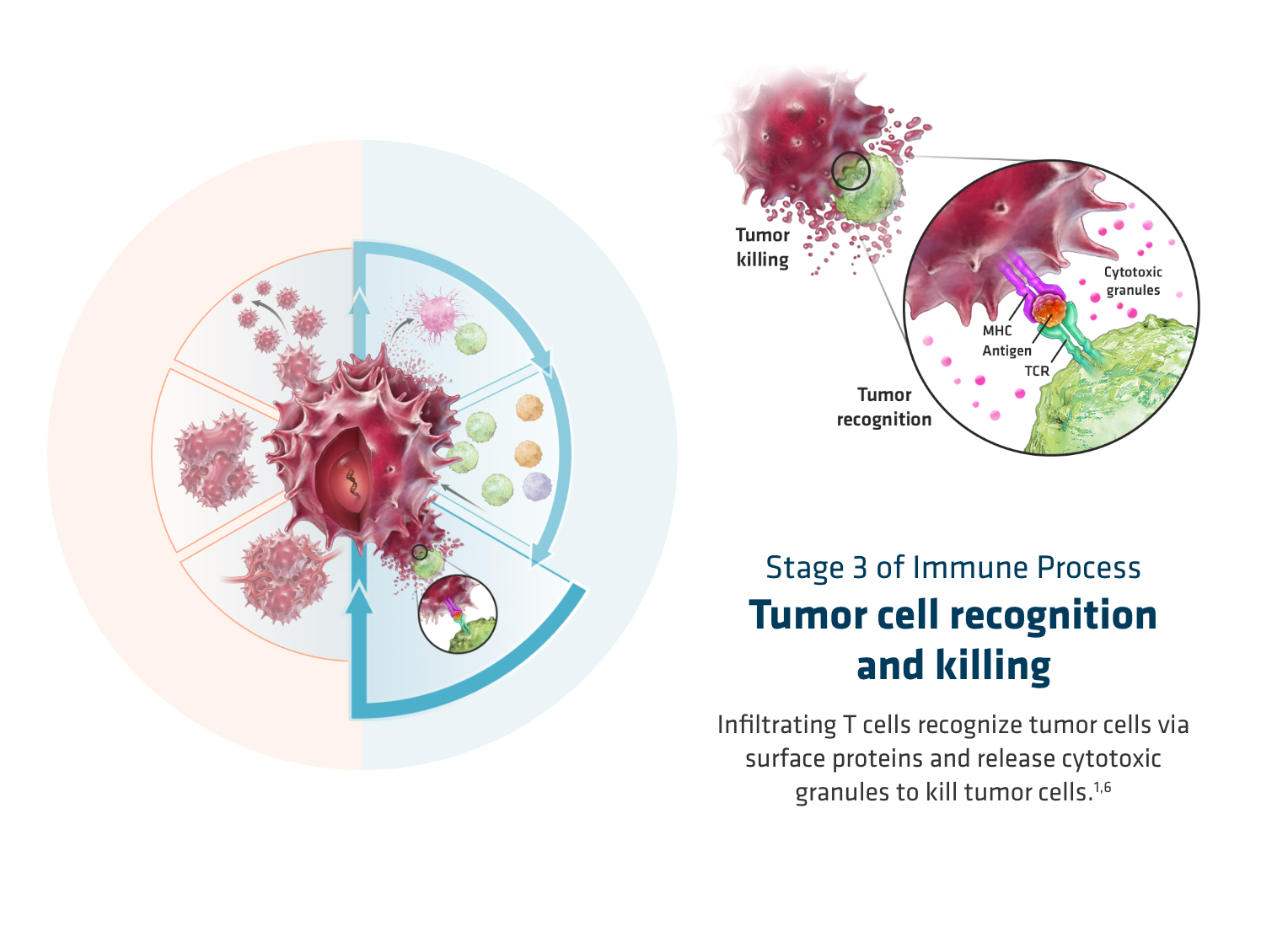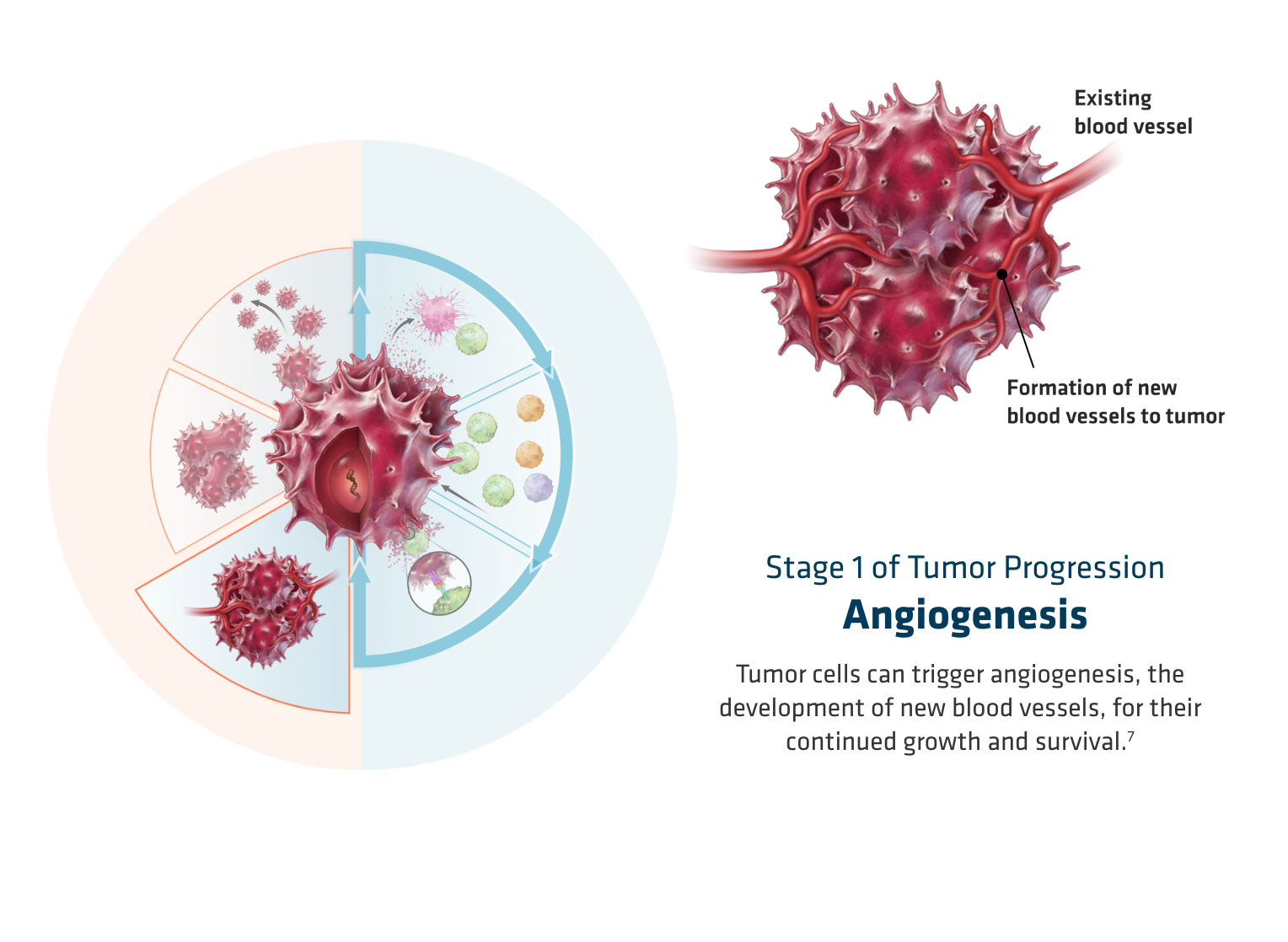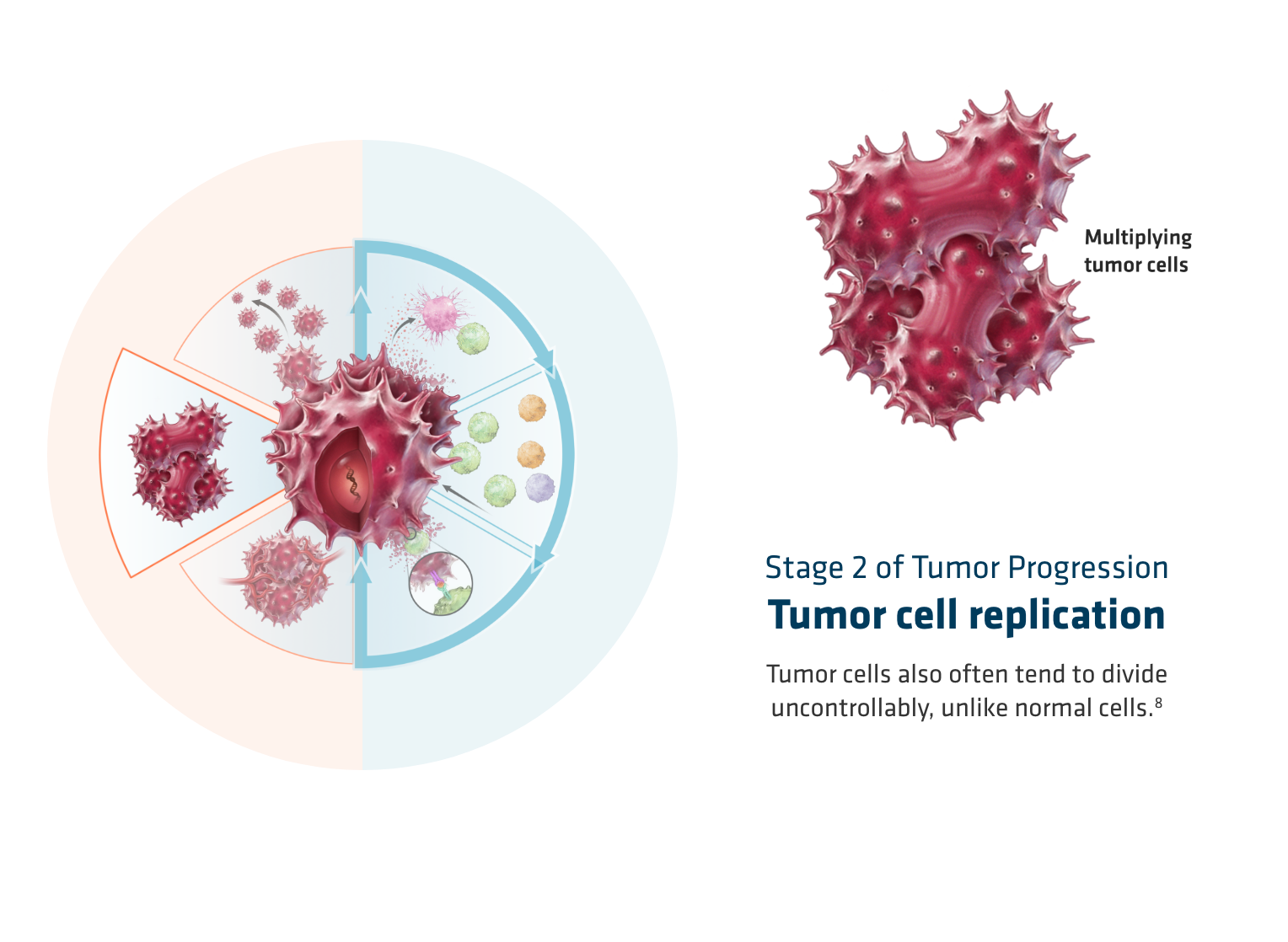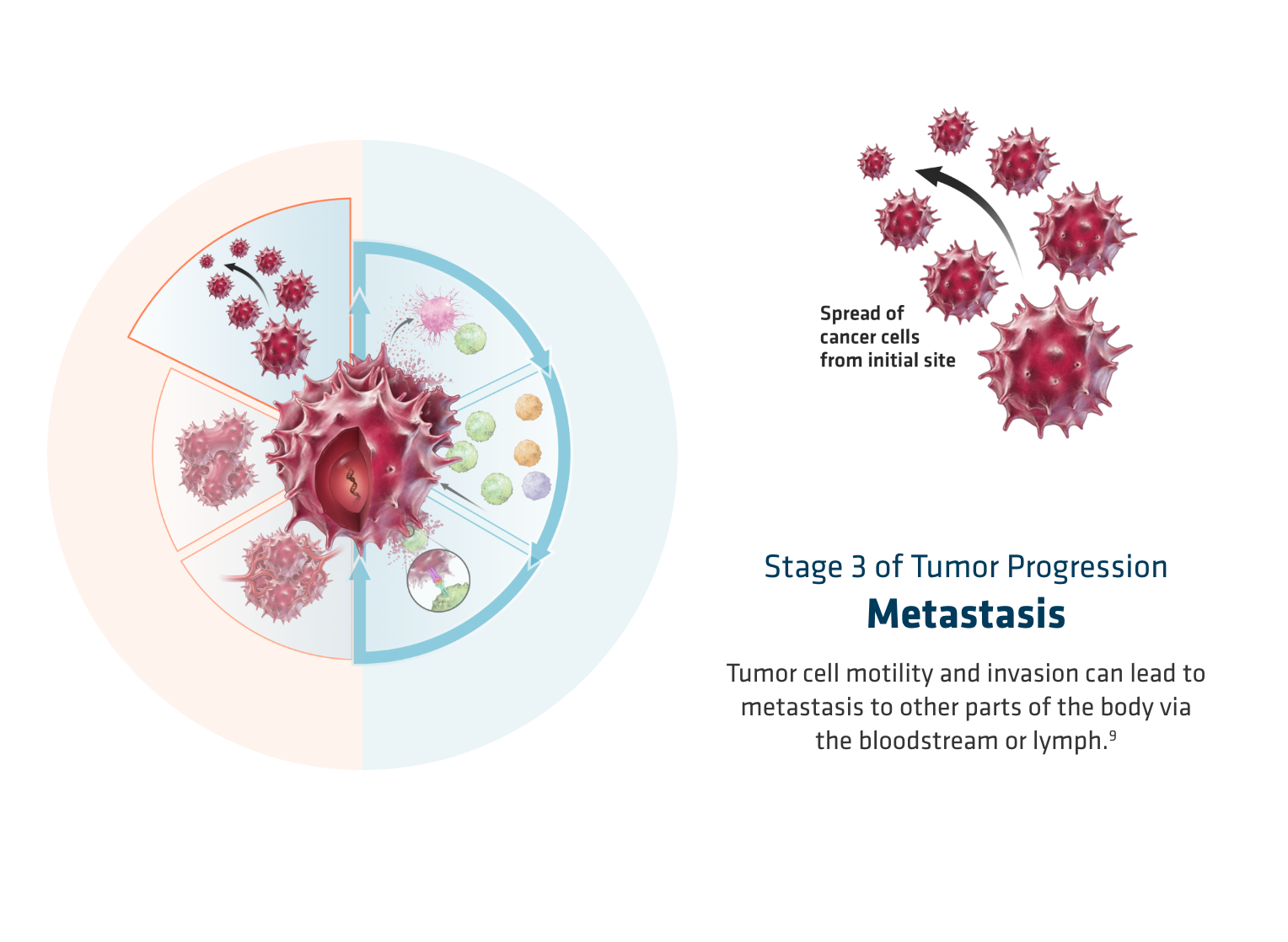
Explore where and how therapy acts on the immune process and tumor progression
Explore the Mechanism of Disease and Mechanism of Action
Mechanism of Disease
There is a complex interplay between the tumor and the immune system that impacts the fate of tumor cells.1-3
Stages of Tumor Progression
Despite the immune system's efforts, tumor cells may develop oncogenic mechanisms that enable their survival and progression.2
APC=antigen presenting cell.
Stages of Immune Process
The immune system can normally detect and eliminate cancer cells through processes occurring within a repeating cycle.1
Mechanism of Action
Choose your treatment type within a specific tumor to view MOA10

Non-Small Cell Lung Cancer (NSCLC)
Metastatic/Recurrent or Early-Stage

Renal Cell Carcinoma (RCC)
Advanced

Gastroesophageal Cancers
Metastatic and Adjuvant

Melanoma
Adjuvant Therapy and Advanced Disease

Urothelial Carcinoma (UC)
Locally Advanced or Metastatic and Adjuvant Therapy
Other tumor types
1L=first-line; 2L=second-line; GEJ=gastroesophageal junction; PD-L1=programmed death-ligand 1.
References:
- Chen DS, Mellman I. Oncology meets immunology: the cancer-immunity cycle. Immunity. 2013;39(1):1-10.
- Pandya PH, Murray ME, Pollok KE, Renbarger JL. The immune system in cancer pathogenesis: potential therapeutic approaches. J Immunol Res. 2016;4273943.
- Liao S, von der Weid PY. Lymphatic system: an active pathway for immune protection. Semin Cell Dev Biol. 2015;38:83-89.
- Obst R. The timing of T cell priming and cycling. Front Immunol. 2015;6:563.
- Lau LL, Jamieson BD, Somasundaram T, Ahmed R. Cytotoxic T-cell memory without antigen. Nature. 1994;369(6482):648-652.
- Martínez-Lostao L, Anel A, Pardo J. How do cytotoxic lymphocytes kill cancer cells? Clin Cancer Res. 2015;21(22):5047-5056.
- Nishida N, Yano H, Nishida T, Kamura T, Kojiro M. Angiogenesis in cancer. Vasc Health Risk Manag. 2006;2(3):213-219.
- Hanahan D, Weinberg RA. Hallmarks of cancer: the next generation. Cell. 2011;144(5):646-674.
- Yilmaz M, Christofori G. Mechanisms of motility in metastasizing cells. Mol Cancer Res. 2010;8(5):629-642.
- OPDIVO [package insert]. Princeton, NJ: Bristol-Myers Squibb Company.
- Metro G, Ricciuti B, Brambilla M, et al. The safety of nivolumab for the treatment of advanced non-small cell lung cancer. Expert Opin Drug Saf. 2017;16(1):101-109.
- Byrne EH, Fisher DE. Immune and molecular correlates in melanoma treated with immune checkpoint blockade. Cancer. 2017;123(S11):2143-2153.
- Zhao J. Cancer stem cells and chemoresistance: the smartest survives the raid. Pharmacol Ther. 2016;160:145-158.
- Felix J, Lambert J, Roelens M, et al. Ipilimumab reshapes T cell memory subsets in melanoma patients with clinical response. Oncoimmunology. 2016;5(7):1136045.
- Pico de Coaña Y, Wolodarski M, Poschke I, et al. Ipilimumab treatment decreases monocytic MDSCs and increases CD8 effector memory T cells in long-term survivors with advanced melanoma. Oncotarget. 2017;8(13):21539-21553.
- Weber JS, Hamid O, Chasalow SD, et al. Ipilimumab increases activated T cells and enhances humoral immunity in patients with advanced melanoma. J Immunother. 2012;35(1):89-97.
- Ansell SM, Hurvitz SA, Koenig PA, et al. Phase I study of ipilimumab, an anti–CTLA-4 monoclonal antibody, in patients with relapsed and refractory B-cell non–Hodgkin lymphoma. Clin Cancer Res. 2009;15(20):6446-6453.
- Farber DL, Yudanin NA, Restifo NP. Human memory T cells: generation, compartmentalization and homeostasis. Nature Rev Immunol. 2014;14:24-35.
- Pedicord VA, Montalvo W, Leiner IM, Allison JP. Single dose of anti–CTLA-4 enhances CD8+ T-cell memory formation, function, and maintenance. Proc Natl Acad Sci U S A. 2011;108(1):266-271.
- Buchbinder EI, Desai A. CTLA-4 and PD-1 pathways: similarities, differences, and implications of their inhibition. Am J Clin Oncol. 2016;39(1):98-106.
- Selby M, Engelhardt J, Lu LS, et al. Antitumor activity of concurrent blockade of immune checkpoint molecules CTLA-4 and PD-1 in preclinical models. Poster presentation at ASCO 2013. Abstract 3061.
- YERVOY [package insert]. Princeton, NJ: Bristol-Myers Squibb Company.
- CABOMETYX [package insert]. Alameda, CA: Exelixis, Inc.






